Your home's emergency heat is there for a reason, and it can be a lifesaver during extreme weather conditions. But should you turn on your emergency heat during an ice storm? Let's take a look at what you should know.
Emergency heat should only be used if something happens to your primary heating system and you're in danger of freezing. For example, if your primary heating source fails or is damaged during a severe winter storm, you may need to rely on your emergency heat to keep your home warm. If your primary heat source does fail, call someone as soon as possible to fix it.
In most cases, you won't need to turn on your emergency heat during an ice storm. Nonetheless, in this article, we will discuss when you should and shouldn't use emergency heat during an ice storm. In addition, we will answer other frequently asked questions about your home's emergency heat, so read on!
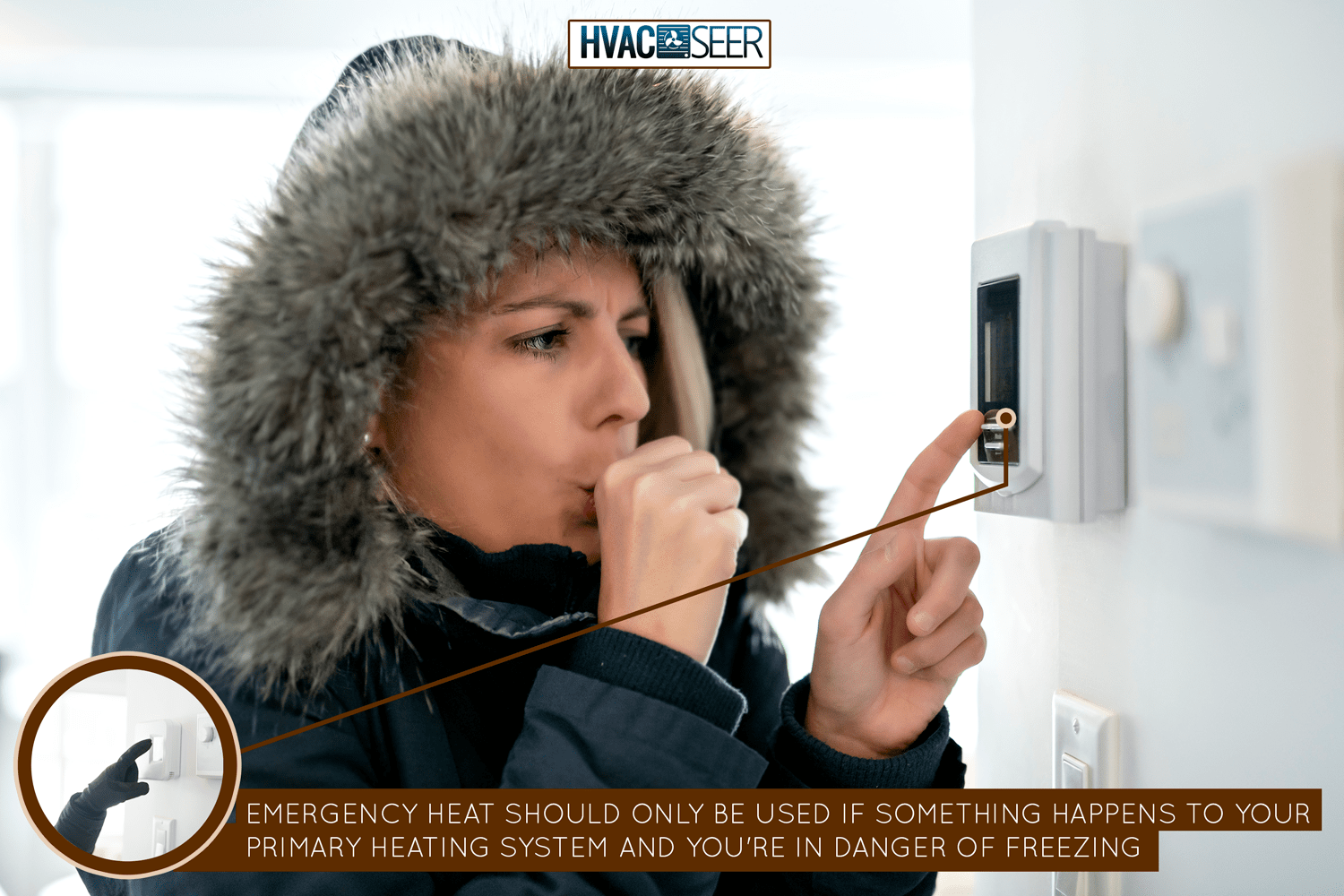
Is Emergency Heat Necessary In An Ice Storm?
For people living in regions where ice storms are common, the question of whether or not to use emergency heat is often top of mind.
And while it's understandable to want to take every precaution possible during extreme weather conditions, there are certain situations when using emergency heat may do more harm than good.
Typically, emergency heat will come on in your home when temperatures inside fall below a certain threshold—usually around 30-35 degrees Fahrenheit. This means that if your home is already fairly warm when an ice storm hits, there's no need to turn on emergency heat.
The reason being is that emergency heat uses a lot of energy and can cause your electricity bill to spike. So if your primary source of heating is doing a good job of keeping your home warm, there's no need to use emergency heat and incur the additional expense.
Now, if your primary heat source fails or is damaged during an ice storm, that's a different story. In this case, you may need to rely on emergency heat to keep your home warm until repairs can be made.
Call a professional immediately if this happens to you so they can assess the situation and make the necessary repairs. Not only will you pay less in energy costs by using emergency heat only when necessary, but you'll also minimize risking yourself and your family to further weather-related dangers.

Why Is Emergency Heat So Expensive?
As we mentioned, emergency heat sucks a lot of electricity which can lead to hefty energy bills. The heat strip that powers emergency heat isn't efficient like a standard heating system, so it uses a lot more energy to heat your home.
It's also important to note that heat strips are only designed to provide temporary heat; they're not meant to be used as a primary heating source for long periods of time. As a result, it puts a tremendous amount of strain on the system, which can cause it to break down more easily.
In other words, using emergency heat when you don't need to is a recipe for disaster both for your home and your wallet.
How Can You Protect Your Heat Pump During An Ice Storm?
If you get the alert that an ice storm is headed your way, there are a few things you can do to help protect your heat pump and minimize the risk of damage:
Clear The Heat Pump of Obstructions
Whenever necessary, clear any snow, ice, or debris that may have accumulated around your heat pump. This will ensure that the unit can function properly and doesn't overheat.
In addition, don't cover your heat pump for any reason. Doing so will be counterproductive, as it will trap heat inside the unit and cause it to overwork itself.
Protect The Heat Pump From Wind
Creating a wind barrier around your heat pump will also help to protect it from the elements. When doing so, keep two things in mind:
First, make sure that the wind barrier doesn't obstruct air flow to the unit. Second, ensure there are at least two feet of clearance around the heat pump to prevent it from becoming overheated.
Monitor The Temperature Inside Your Home
As we mentioned, emergency heat will come on automatically when the temperature inside your home falls below a certain threshold.
To avoid using emergency heat unnecessarily, keep an eye on the temperature in your home and take action before it gets too cold. This may involve turning on a space heater or clearing ice and snow from around your heat pump to ensure that it can function properly.
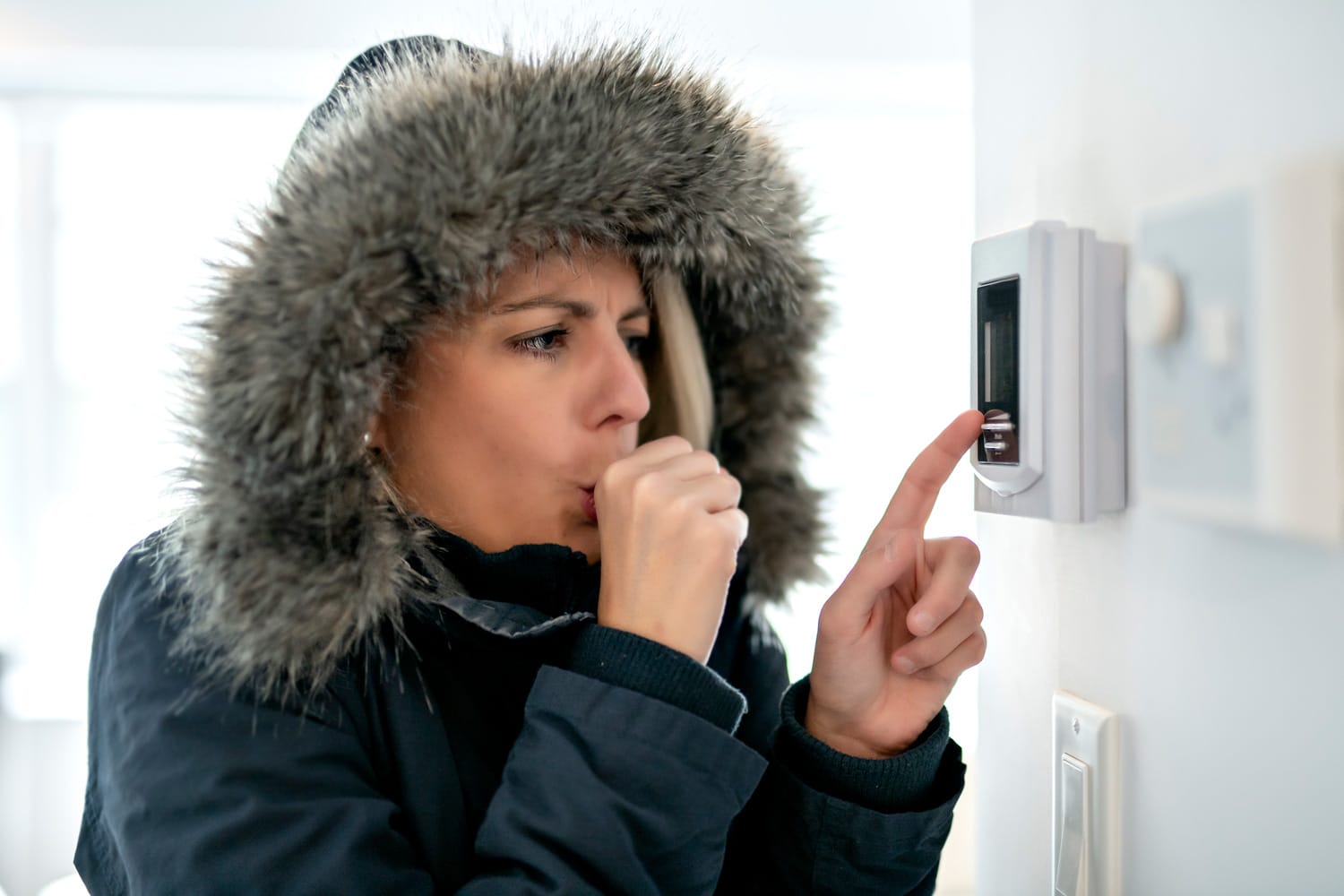
Make Sure Your Heat Pump Is In Good Condition
Before the winter season, have a professional inspect your heat pump to ensure that it's in good condition. This will help to prevent any issues from arising during the winter and minimize the risk of your heat pump being damaged by an ice storm.
The most important thing is for the HVAC specialist to check that the defrost cycle is working properly. If it isn't, it could cause your heat pump to overheat and break down when ice begins to accumulate on the unit.
Keep these tips in mind, and you'll be well on your way to protecting your heat pump during an ice storm!
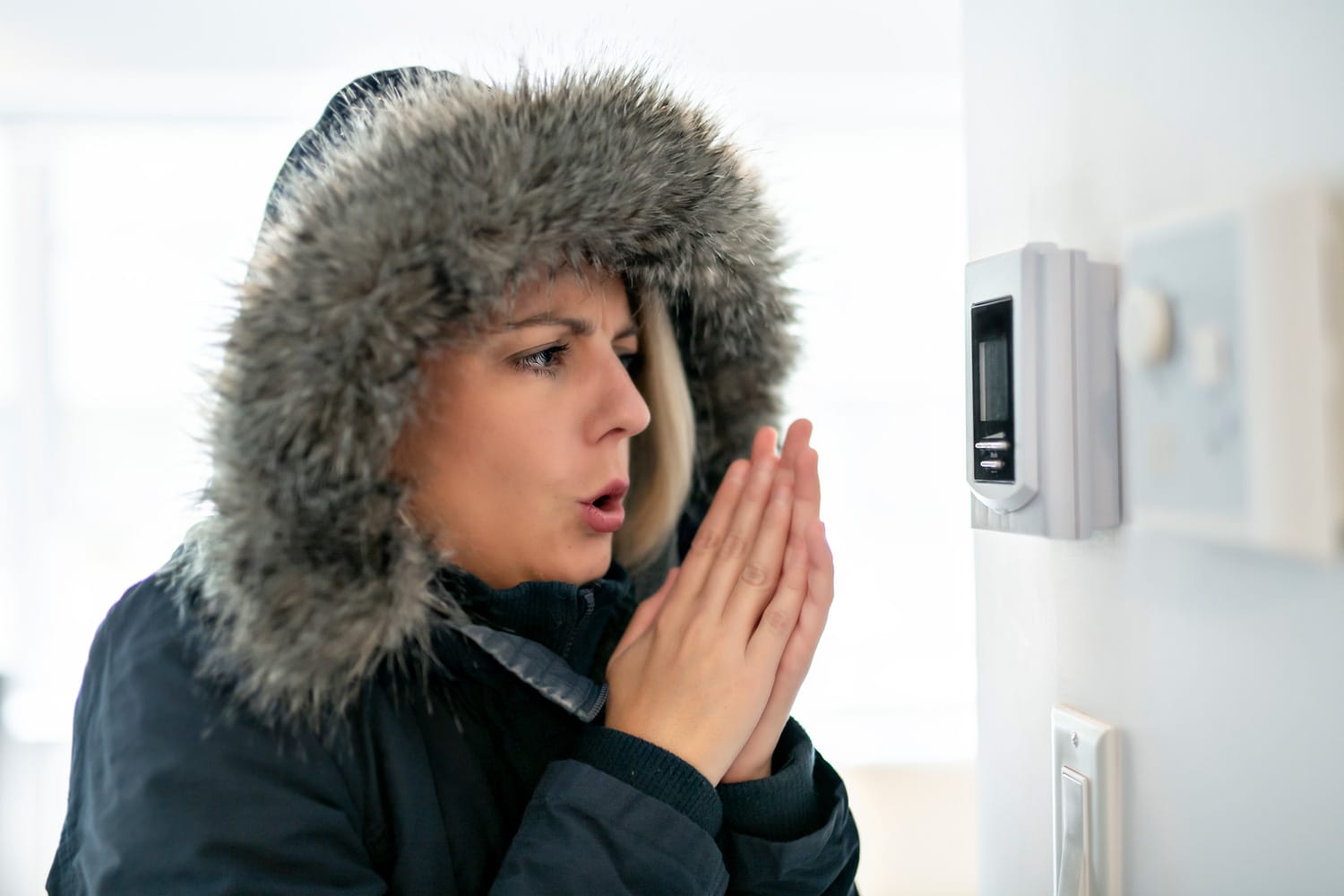
How Do You Know If The Emergency Heat Is On?
In an emergency, you want to be sure your secondary heating system is on and working properly. Typically, your thermostat will have a red light that indicates whether the emergency heat is on.
If you don't see a light, you can also check the settings on your thermostat. If the emergency heat didn't kick on its own, you may have to turn it on manually.
Once you've turned on the emergency heat, be sure to monitor the temperature in your home closely. As we mentioned, emergency heat is very expensive to use and can quickly lead to high energy bills.
In addition, if the temperature is still dropping in your home, it's a good idea to contact a professional.
What Should You Do When Emergency Heat Comes On?
If your emergency heat is on, then you'll want to take some steps to mitigate the situation:
First, check to see if there are any obstructions around your heat pump. If there is snow or ice blocking the unit, clear it away.
Next, make sure that everything is sealed up tight. If there are any gaps or cracks in your doors or windows, seal them up to prevent heat from escaping.
Finally, monitor the temperature inside your home closely. If it's still dropping, you may need to take additional measures, such as turning on a space heater. From there, call a professional as soon as possible.
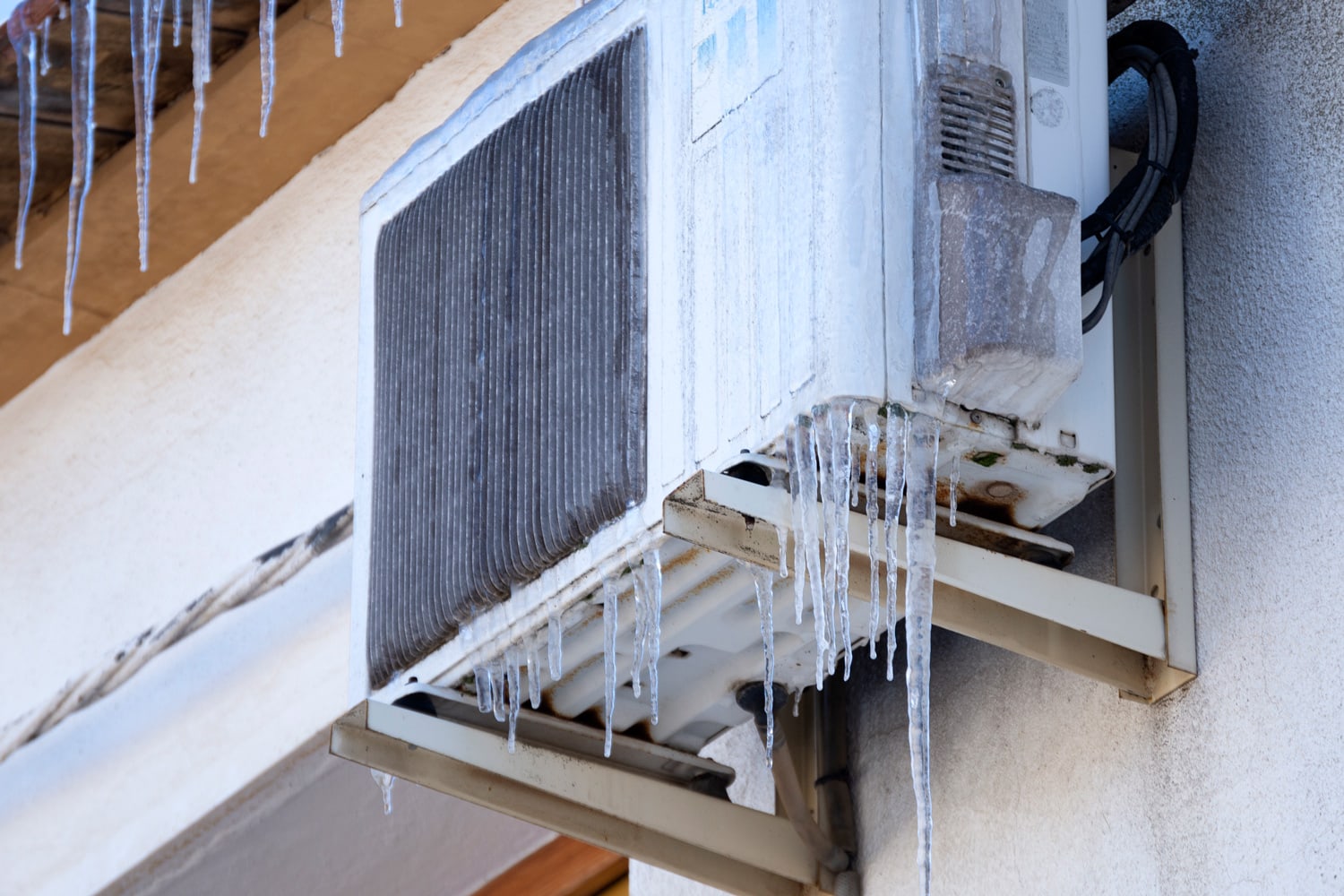
Can You Pour Hot Water On A Heat Pump?
If your heat pump has frozen over, pouring hot water on it is one way to thaw it out. This can be a quick solution to the problem, but it's not without its risks.
When defrosting the heat pump, don't use anything to poke or prod at the ice, as this could damage the unit. Once the heat pump is defrosted, check to see if there are any obstructions around the unit. If there is snow or ice blocking the unit, clear it away.
Lastly, try turning on the heat pump again to see if it's working properly. If not, resort to your emergency heat until a professional can take a look at the unit.
How Cold Will My House Get Without Heat?
With no heat source, your home will eventually reach the same temperature as the outside air. However, it also varies depending on how well-insulated your home is.
A well-insulated home will take longer to reach the same temperature as the outside air. If you live in a region with extreme temperatures, upgrading your insulation could be a good idea.
Also, having an alternative heat source such as a fireplace or space heater can help to keep your home warm in the event of an emergency.
Read More: How Cold Will An Unheated House Get?
Why Is My Emergency Heat Blowing Cold Air?
While it can be concerning to feel cold air coming from your vents when your emergency heat is on, it is actually no cause for alarm.
What this means is that the heat pump has gone to defrost mode. When this happens, it starts to defrost the coils, which then pushes the cold air out of your vents. When the heat pump completes the defrost cycle, the air coming out of your vents should go back to being warm again.
If you're still feeling cold air after the defrost cycle is complete, then there might be an issue with your heat pump.
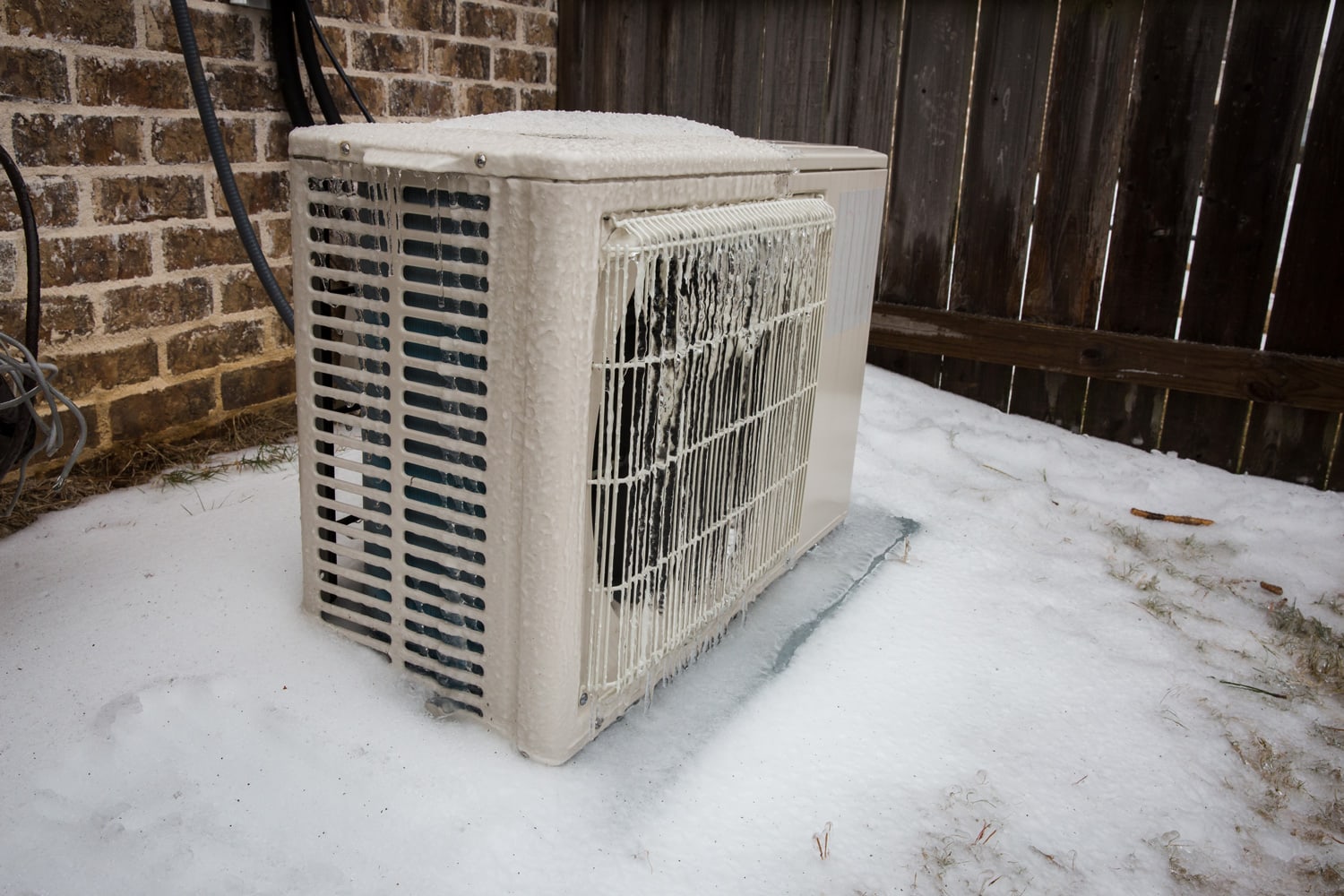
Final Thoughts
Overall, use your home's emergency heat only when you have to. It's much more expensive to use than your heat pump and can quickly lead to high energy bills.
If your heat pump has frozen over, use the tips in this article to thaw it out. If the heat pump is still not working, then you can resort to your emergency heat until a professional can take a look at the unit.
Made it to the end? Here are other articles you might find helpful:
